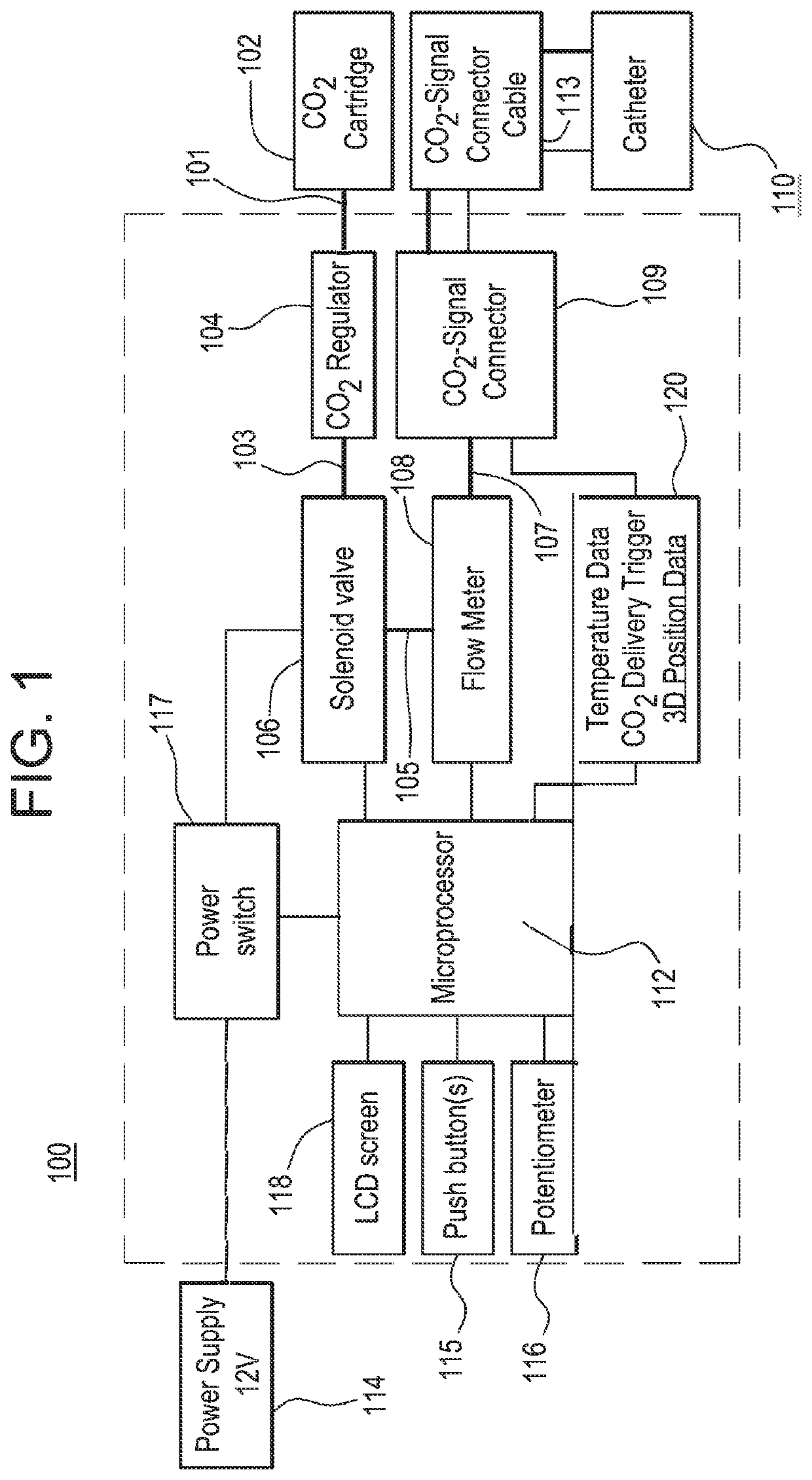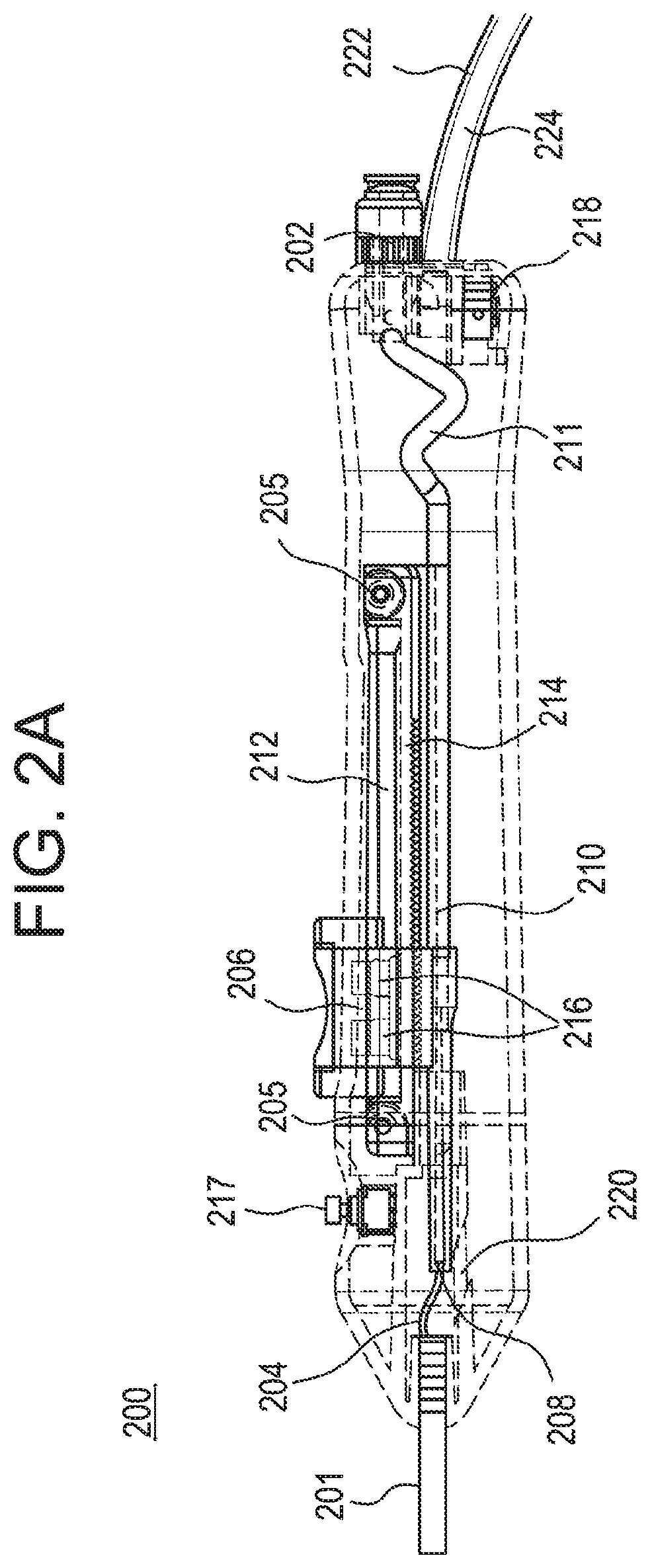Transesophageal Catheter for Thermal Protection of the Esophagus
a transesophageal catheter and esophageal technology, applied in the field of systems, methods and devices for preventing esophageal damage, can solve the problems of frequent damage of esophagus, increased risk of stroke, heart attack, etc., and achieve excellent insulating
- Summary
- Abstract
- Description
- Claims
- Application Information
AI Technical Summary
Benefits of technology
Problems solved by technology
Method used
Image
Examples
Embodiment Construction
[0047]The present disclosure relates to system(s), method(s) and device(s) for creating separation between biological surfaces such as tissues, tissue planes, and / or organs, for example, using carbon dioxide for various clinical applications. Such applications may include thermal protection of the esophagus, avoiding mechanical / thermal damage of an underlying tissue during dissection by creating separation of the tissue planes with CO2, or protecting against radiation enteropathy via creation of a radiation-impermeable layer of hydrogel / CO2). Other applications may benefit from the present disclosure.
[0048]Although various applications may benefit from the present disclosure, an illustrative example may comprise system(s), method(s) and device(s) for preventing or minimizing the formation of an esophageal fistula or esophageal tissue damage due to unintended thermal dispersion during ablation of the heart wall. In the present disclosure, carbon dioxide is injected or infused into th...
PUM
 Login to View More
Login to View More Abstract
Description
Claims
Application Information
 Login to View More
Login to View More - R&D
- Intellectual Property
- Life Sciences
- Materials
- Tech Scout
- Unparalleled Data Quality
- Higher Quality Content
- 60% Fewer Hallucinations
Browse by: Latest US Patents, China's latest patents, Technical Efficacy Thesaurus, Application Domain, Technology Topic, Popular Technical Reports.
© 2025 PatSnap. All rights reserved.Legal|Privacy policy|Modern Slavery Act Transparency Statement|Sitemap|About US| Contact US: help@patsnap.com



